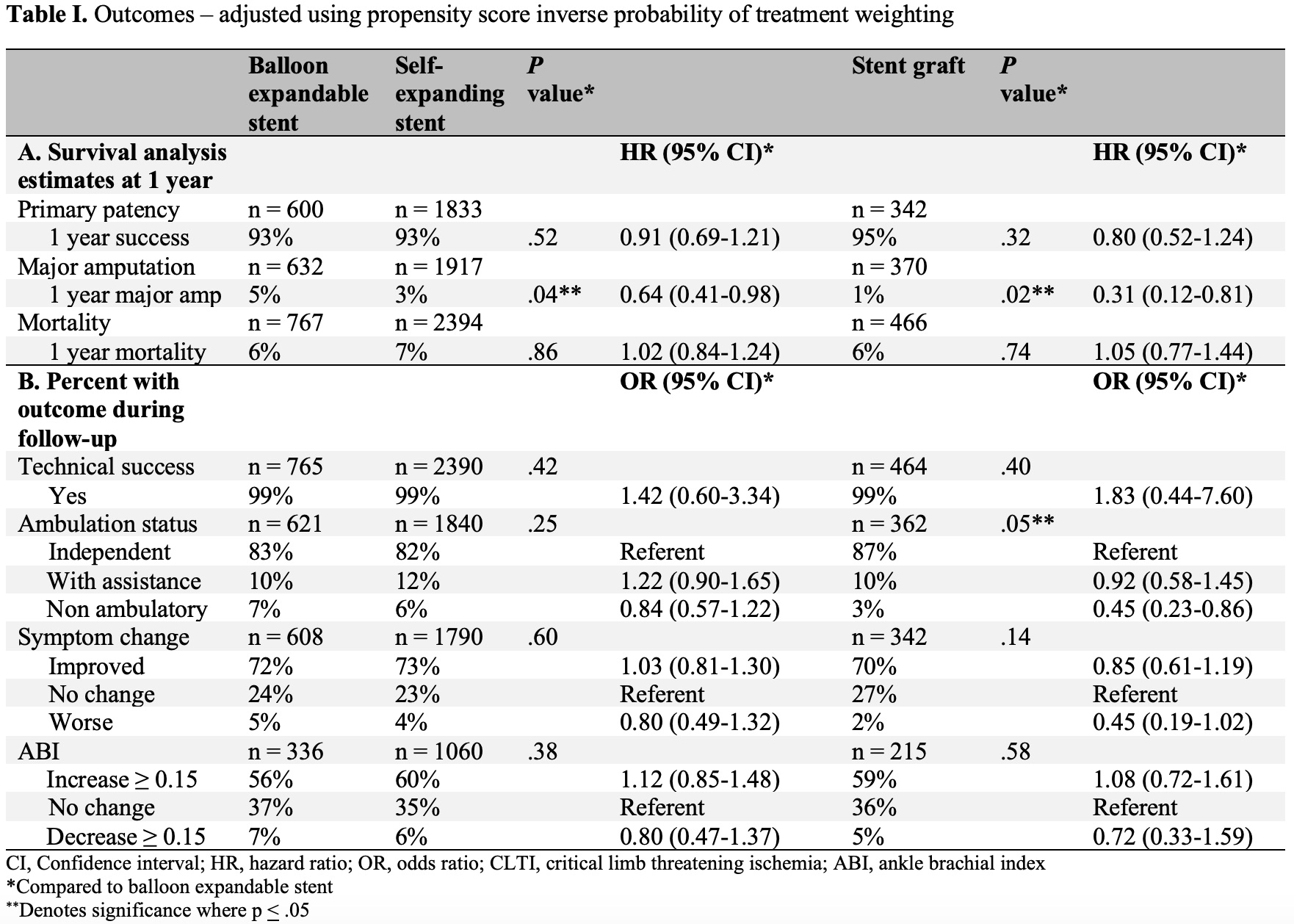A Comparative Analysis Of The Effectiveness Of Balloon Expandable Stents, Self-expanding Stents, And Stent Grafts For External Iliac Artery Occlusive Disease
Tessa Cattermole, MD, McKenna Schimmel, Peter Callas, Ph.D., Daniel Bertges, MD, Katelynn Ferranti, MD.
University of Vermont Medical Center, Burlington, VT, USA.
OBJECTIVESWhile endovascular intervention is a well-established management option for iliac disease, a scarcity of comparative data has led to a lack of guidelines for optimal stent type. The goal of this study is to compare outcomes of balloon expandable stents (BES) with self-expanding stents (SES) and stent grafts (SG) in patients with symptomatic peripheral arterial disease (PAD) due to external iliac artery (EIA) occlusive disease.
METHODSThe prospective Vascular Quality Initiative Peripheral Vascular Intervention registry (2010-2019) was used to analyze patients who underwent isolated EIA intervention using BES, SES, or SG by either percutaneous transfemoral approach or with concomitant femoral endarterectomy. The primary outcomes were change in symptom status and change in ankle brachial index (ABI). Secondary outcomes included primary patency at one year, major amputation, and survival at one year. Propensity matching was used to adjust for differences between groups and key outcomes were illustrated by Kaplan Meier curves.
RESULTSA total of 3,627 EIA were treated. BES, SES, and SG were used in 767 (21%), 2394 (66%), and 466 (13%) patients, respectively. The indication was claudication in 61%, 59%, and 56%, and chronic limb threatening ischemia in 34%, 35%, and 37% of cases utilizing BES, SES, and SG, respectively. Devices were deployed by percutaneous transfemoral approach in 82%, 81%, 79% of cases or during concomitant femoral endarterectomy in 17%, 18%, 20% of cases utilizing BES, SES, and SG, respectively. Outcomes are displayed in Table 1.

CONCLUSIONSChanges in symptom status and ABIs before and after intervention were equivalent in patients undergoing PVI for EIA occlusive disease regardless of stent type. Primary patency and mortality rates were also equivalent regardless of stent type. Major amputation rates were significantly higher in the BES group compared with the SES and SG groups.
Back to 2021 ePosters
